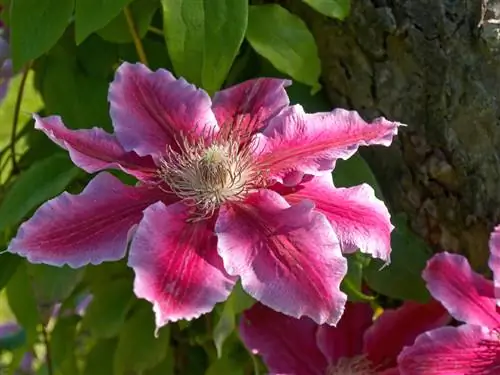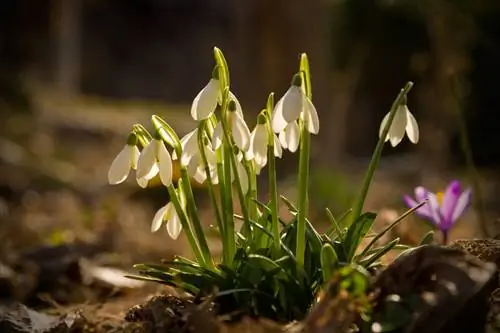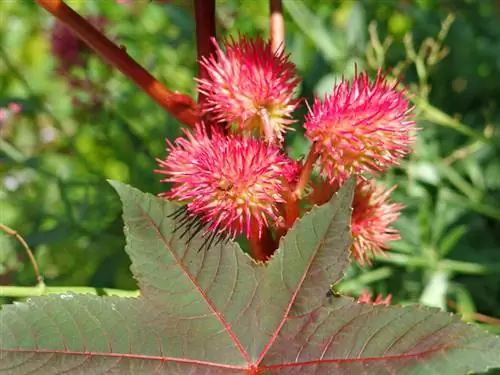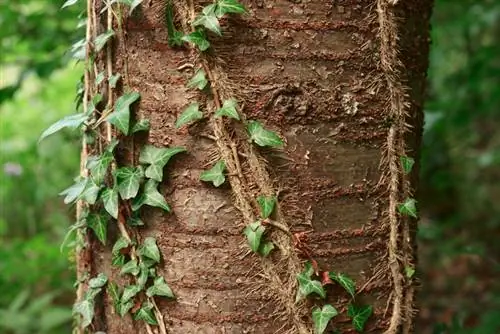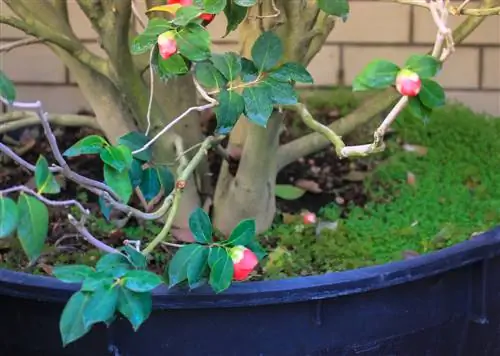- Author admin [email protected].
- Public 2023-12-16 16:46.
- Last modified 2025-01-23 11:20.
Numerous clematis develop optimally with their heads in the sun and their feet in the shade. Therefore, smart hobby gardeners choose a sunny to semi-shady location to cover the roots with mulch or underplanting. Find out how to do it here.
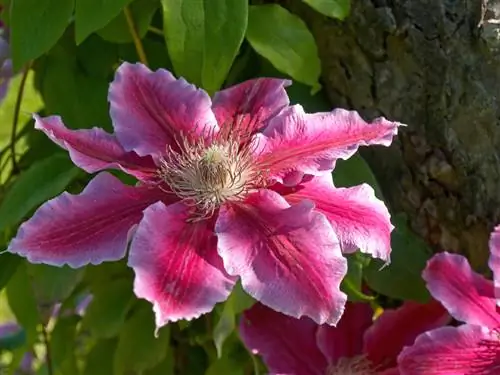
How to protect the roots of a clematis?
To protect the roots of a clematis, you can use bark mulch or plant it with smaller perennials and grasses. It is important that the clematis gets enough sun and the soil stays moist.
Protect the roots of a clematis with mulch - here's how it works
In order to protect the sensitive roots of a clematis and keep the soil moist for longer, bark mulch has proven to be excellent. This is chopped bark from a pine or spruce tree, which at the same time sustainably suppresses weeds. Since this mulching material removes a proportion of nutrients from the soil, proceed as follows when using it:
- Work the soil around the freshly planted clematis with a rake (not a rake) until it is finely crumbly
- Sprinkle horn shavings or horn meal (€7.00 on Amazon) in a dosage of 40-50 grams per square meter
- Add a handful of algae lime or rock dust to stabilize the pH value
- Distribute the bark mulch in a layer height of 5-8 centimeters
Pine bark, the noble variant, is more durable and has a visually appealing effect. This premium decorative cover for the roots of a clematis also exudes a wonderfully spicy scent of fresh wood.
Underplanting decoratively covers clematis roots
To protect the roots of a mighty clematis, small perennials can be considered. It is important to remember that not all clematis like a shaded base. Sun lovers, like Clematis texensis, will accept at most a layer of mulch to protect the roots. A majestic Clematis montana or impressive Clematis vitalba generally have no objection to the following underplanting:
- Asters (Aster linosyris)
- Small umbel bellflower (Campanula lactiflora)
- Storksbill (Geranium)
- Gold basket (Chrysogonum virginianum)
- Gypsophila (Gypsophila hybrid 'Rosenveil')
- Little Lady's Mantle (Alchemilla erythropoda)
- Stone thyme (Calamintha nepeta)
If you don't want flowering perennials to steal the show from clematis, use delicate grasses as underplanting. The Japanese mountain grass or the stone feather are ideal for this task. For the clematis in the large planter, hanging cushion perennials are recommended as underplanting, such as the picturesque blue cushions.
Tips & Tricks
An inexpensive and uncomplicated cover for clematis roots in the pot is expanded clay, lava granules or Seramis. Unlike bark mulch, these materials do not remove nutrients from the substrate and create a neat, clean appearance.

